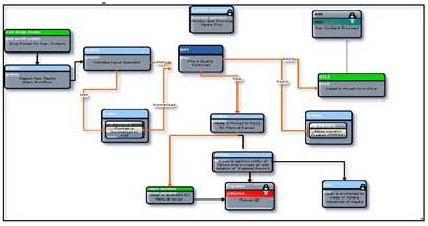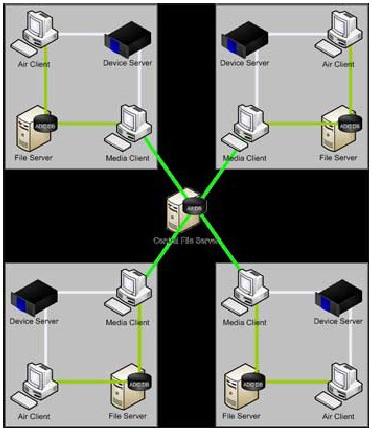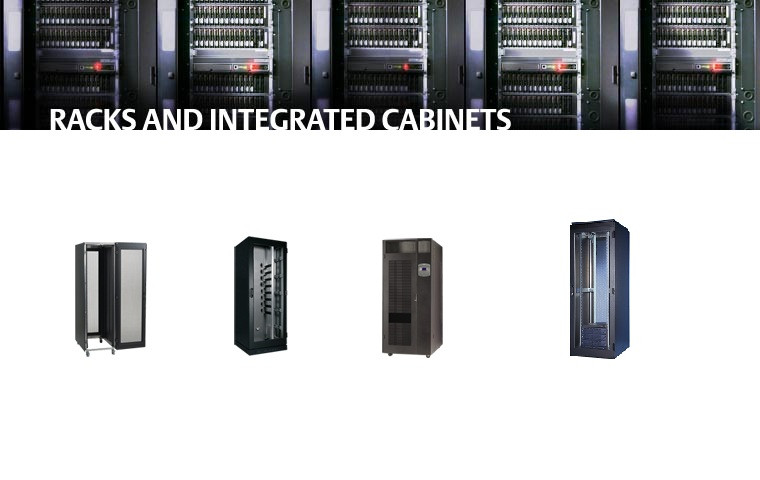ADC
Automated Content Management and Distribution
Harris® ADC™ automation is the solution to any content management workflow requirement. It is the ideal platform for content control and delivery by incorporating the benefits of asset management with the efficiencies of automated operations.
The ADC system’s modular, scalable architecture allows it to adapt to your evolving business needs, giving you the tools and flexibility to explore new revenue concepts. Trusted, proven and reliable, ADC is the solution that has taken automation from now to next.
FEATURES
Reliable
ADC is trusted as the automation solution for some of our industry’s most demanding environments.
A resilient, robust and proven platform, ADC protects your revenue streams with multiple, interlocking redundancy strategies
Flexible and Scalable
The ADC system’s scalable, modular architecture allows it to economically and efficiently adapt as your needs evolve. Whether it is used to launch more channels, incorporate new media workflows, or meet enhanced redundancy requirements, ADC brings simplicity to scalability
Affordable
Economical package pricing provides an affordable system entry point to accommodate any budget or workflow practice. The ADC system’s small hardware footprint, quick commissioning and low cost of ownership make it the ideal solution for small- to medium-sized operations
Easy to Use
Intuitive, Windows®-based applications provide an enriched user experience, allowing users of all skill levels to quickly become proficient in system operations
Interoperable
ADC integrates with more devices and business systems than any other automation product, creating seamless workflow environments
PRODUCT DETAILS
ADC is a proven solution for a variety of markets, including:
Broadcast/Cable Networks
ADC supports the unique workflows associated with network content. With the ability to support regionalized commercial insertion, and advanced media workflows including conversion to mezzanine formats, automated QC, and enhanced redundancy, ADC is the preferred solution for network content providers.Commercial Environments
ADC is the ideal platform for dynamic commercial environments due to its ability to support complex branding, maximize efficiencies in multichannel operations, support rapidly changing schedules that are associated with live news and sports, and seamlessly manage content from acquisition to distribution.Public
ADC playout automation successfully supports workflows at PBS member stations, including satellite control and tight interaction with Traffic/Scheduling systemsCentralized Operations
ADC supports multiple centralization strategies, including distributed ingest, centralized and edge playout. ADC has the flexibility and feature set to accommodate any centralized practice.
ADC playout automation is built on the following components:
Device Controller
The Device Controller provides real-time control of devices, and can accommodate and manage multiple playlists on multiple networked and serial devices. Individual device controllers can manage several channels while simultaneously ingesting other channels. Devices Controllers can be paired for redundant operations, supporting manual or automatic failover.File Server
A standard Microsoft SQL database stores all metadata needed to support automated workflows. The flexible database structure allows customers to create their own database tables in addition to those provided with the standard schema. Like the Device Controller, File Servers can be paired for redundancy, supporting manual or automatic failover.Air Client™
A highly intuitive and efficient workstation used for managing playlists. Air Client™ can monitor and control multiple playout and ingest channels, across multiple device controllers, from a single UI.Media Client
An ingest workstation that allows new material to be acquired by automation. Media Client also manages the automation’s database and the media that is stored on various devices, such as video disks and archives.
Utilizing this modular architecture ADC can be simply and economically, scaled to grow with the evolving needs of a facility. Regardless if it is launching more channels, incorporating new media workflows or enhanced redundancy, ADC brings simplicity to scalability.Right-Sized Redundancy
ADC features multiple, interlocking redundancy strategies so you can utilize the method that best protects your revenue streams. These include:List Redundancy
List Redundancy provides advanced protection for your content through the duplication and synchronization of automation schedules. List Redundancy secures your operations through the automatic creation of parallel transmission paths, either of which can assume playout responsibilities should the need arise.Cloning
Cloning provides real-time, automatic synchronization and failover between a pair of Device Servers. Cloning continuously monitors the health and status of the active Device Server and, if it detects a problem, will perform a seamless and automatic failover over to a second Device Server. No manual interaction is required to initiate or complete the changeover process.FlexSync
Delivering the ultimate in flexibility, FlexSync gives you control over how redundant automation schedules are populated. It allows schedules to run asynchronously, with different content during someday parts and in parallel in others, for redundant protection.Microsoft® Clustering
The ADC database architecture supports Microsoft® Clustering, allowing it to be used to protect your metadata assets.



